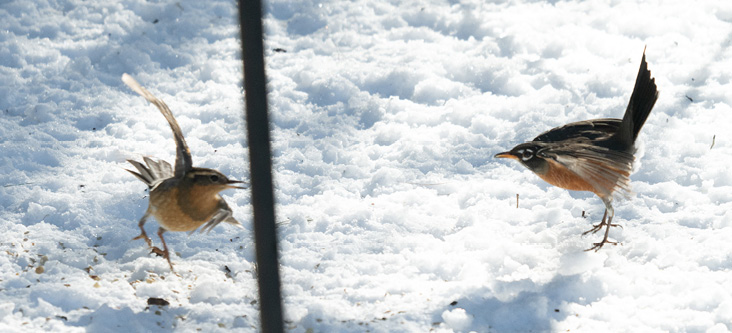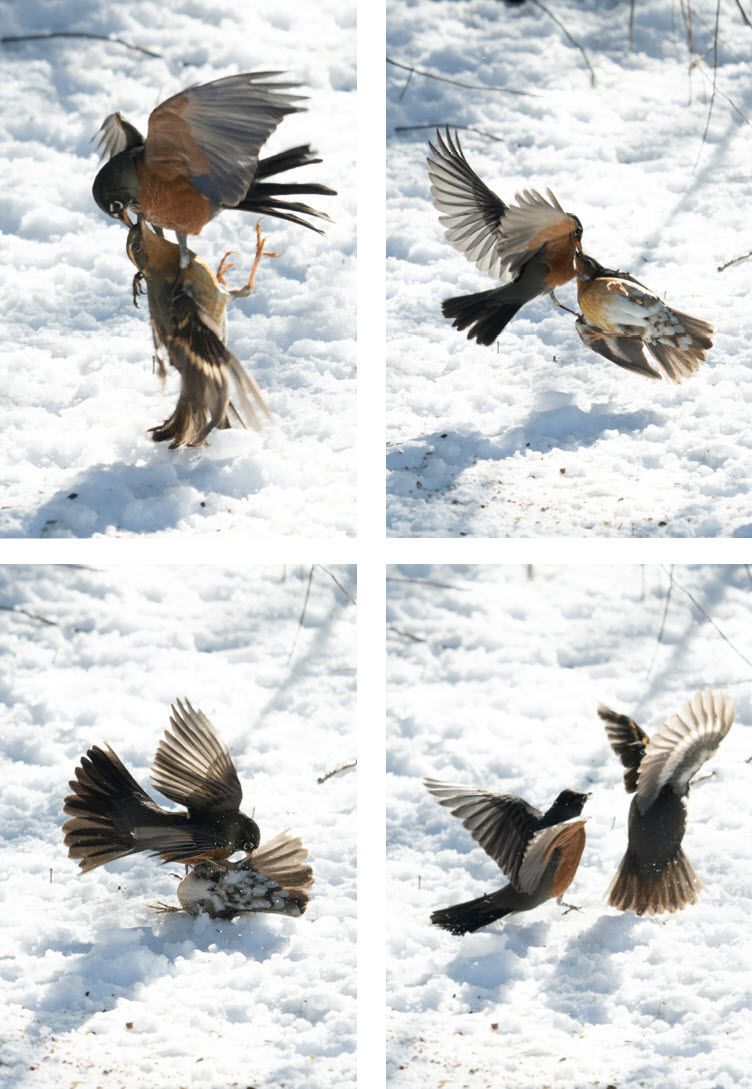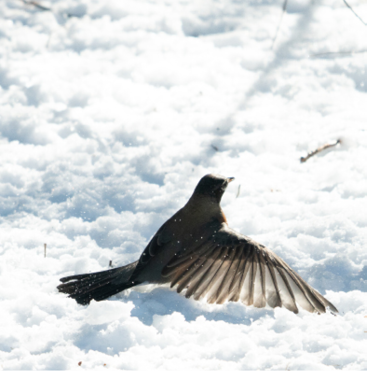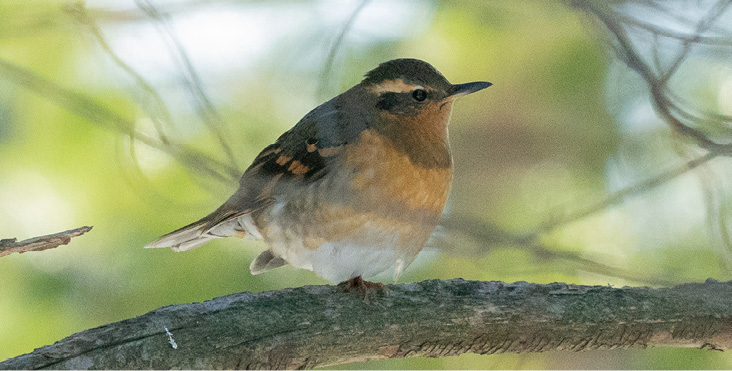Christine A. Goddard

Figure 1A. First of a sequence of photos taken at five frames per second showing interspecific conflict between a vagrant Varied Thrush and an American Robin. Photographs by the author.
On December 29, 2020, I noticed an unfamiliar bird feeding on the ground under the feeders in my backyard in Sudbury, Massachusetts. Research revealed that it was a Varied Thrush (Ixoreus naevius), an extremely rare visitor to the East Coast. For more than a month after that first observation, the bird made regular appearances, briefly visiting several times per day to scoop up the scattered seeds and nuts under the feeders. Typically, the thrush would amicably share the feeding area with other birds feeding on the ground such as Dark-eyed Juncos, Northern Cardinals, and Blue Jays.
However, mid-morning on January 29, 2021, an unexpected altercation occurred. The thrush flew to the ground as usual, but a sole American Robin that only recently started visiting the feeder area, was already on the ground in the same space as the thrush. Almost instantaneously, the robin focused on the thrush, taking a threatening stance (Fig. 1A). The thrush appeared to accept the robin’s challenge (Fig. 1A) and the birds immediately flew at each other. They physically engaged for no more than one or two seconds (Figs. 1B-1D). As the larger bird, the robin dominated the fight and the thrush retreated into the woods (Figs. 1E and 1F). I was able to spot the thrush a few minutes after the fight, resting on a branch in the woods, seemingly none the worse for wear (Fig. 2). It eventually fed on the ground after the robin departed the area.

Figure 1B (top left) 1C (top right) 1D (bottom left) 1E (bottom right).
This altercation was behaviorally interesting because this was the first time over the course of a month of watching the thrush that I observed it engage with any other bird, even though it regularly encountered different species feeding in the same space. The robin’s behavior was also intriguing in that it reacted to the thrush’s presence much more aggressively than it reacted to the other species it normally encountered in the feeding area. On several occasions since the altercation, I observed both species visiting the feeder area, but never at the same time. When the robin was feeding, the thrush could sometimes be seen in a nearby tree waiting for its turn.

Figure 1F.
Extreme antagonism of American Robins toward Varied Thrushes has been previously documented in the thrush’s native range on the West Coast (Martin 1970). During an unusually snowy winter in Oregon, the interactions between thrushes and other birds were observed at a feeder area. The author reported that unlike other species encountered by the thrushes, robins were “overtly and persistently aggressive toward the Varied Thrushes….” Not only did robins consistently initiate fights with thrushes, they typically dominated. The reason for the observed aggression between West Coast Varied Thrushes and American Robins was not speculated by the author, but the similar behavior seen at my feeder suggests some sort of innate conflict between the two species that transcends geographic location.

Figure 2. Varied Thrush post-altercation, resting in a nearby tree.
Reference
- Martin, S. G. 1970. The Agonistic Behavior of Varied Thrushes (Ixoreus naevius) in Winter Assemblages. Condor 72:452–459.
